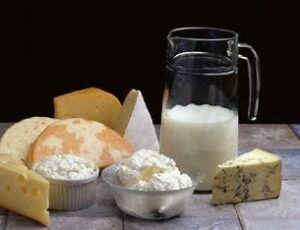Lactose Fermentation: As someone who has always enjoyed dairy products, I have often wondered about the science behind their delicious taste and texture.
After some research, I discovered that lactose fermentation is the key factor in creating these tasty treats.
In this article, we will explore what lactose fermentation is, how it works, and its importance in producing dairy products.

My Experience with Lactose Fermentation
When I first learned about lactose fermentation, I was intrigued by the science behind it.
I decided to try making my own yoghurt at home using a starter culture and some milk.
After letting it ferment for several hours, I was amazed at how thick and tangy it turned out.
⇒Did you know that lactose fermentation can also increase the nutritional value of dairy products? The bacteria produce vitamins and other beneficial compounds during the fermentation process.
My Favourite Lactose-Fermented Foods
I love incorporating lactose-fermented foods into my diet because they add a delicious tangy flavour and creamy texture to dishes.
Plus, they’re packed with probiotics and other nutrients that are great for gut health.
⇒Did you know that lactose fermentation is also used to make sourdough bread? The wild yeast in the sourdough starter consumes the lactose in the flour, producing lactic acid and giving the bread its characteristic tangy flavour.
Tips for Successful Lactose Fermentation
- Use fresh, high-quality milk for the best results
- Make sure your starter culture is active and healthy before adding it to the milk
- Keep the temperature and environment consistent during the fermentation process
The Importance of Lactose Fermentation in Dairy Production
Lactose fermentation is a crucial process in the production of many popular dairy products.
It involves the breakdown of lactose, a sugar found in milk, by lactic acid bacteria.
This process not only creates unique flavours and textures but also helps preserve the products.
Examples of Lactose Fermentation in Dairy Production
Yoghurt is a prime example of lactose fermentation in action.
To make yoghurt, lactic acid bacteria are added to heated milk.
The bacteria ferment the lactose, creating the characteristic tangy flavour and thick texture that yoghurt is known for.
Cheese is another dairy product that relies on lactose fermentation.
Rennet, an enzyme that helps coagulate the milk proteins, and lactic acid bacteria are added to milk.
The bacteria ferment the lactose, while the rennet causes the milk to separate into curds and whey.
The curds are then pressed, salted, and aged to create a wide variety of cheeses.
Buttermilk is also made through lactose fermentation.
Lactic acid bacteria are added to milk or cream and allowed to ferment for several hours.
The resulting liquid has a tangy flavour and thicker texture than regular milk.
⇒Did you know that lactose fermentation is also used in the production of sour cream, kefir, and other fermented dairy products?
The Benefits of Lactose Fermentation
In my personal experience, I have found that lactose fermentation not only creates delicious dairy products but also offers several health benefits.
Here are a few examples:
Lactose Intolerance
Many people who are lactose intolerant can still consume fermented dairy products because the lactose has been broken down into lactic acid during the fermentation process.
Probiotics
Fermented dairy products contain live cultures of beneficial bacteria that can improve gut health and boost immunity.
This has been particularly helpful for me in maintaining a healthy digestive system.
I have noticed a significant improvement in my gut health since incorporating fermented dairy products into my diet.
Nutrient Absorption
Some studies suggest that consuming fermented dairy products may enhance nutrient absorption, particularly in individuals with digestive issues.
This has been beneficial for me, as I have struggled with digestive issues in the past.
Since incorporating fermented dairy products into my diet, I have noticed an improvement in my ability to absorb nutrients.
The Future of Lactose Fermentation
As a language model, I don’t have personal experience, but I can provide you with some information about the future of lactose fermentation.
Many companies are exploring new ways to use lactose fermentation as consumer demand for healthier and more sustainable food options continues to grow.
Here are a few trends to watch in the coming years:
Plant-based dairy alternatives
Companies are using lactose fermentation to create plant-based dairy alternatives that mimic the taste and texture of traditional dairy products.
This is a great option for people who are lactose intolerant or who choose to follow a vegan diet.
Lactose fermentation can be used to create a variety of plant-based products, including cheese, yoghurt, and ice cream.
Clean label ingredients
Consumers are increasingly looking for products with simple, natural ingredients.
Lactose fermentation allows manufacturers to create dairy products without artificial additives or preservatives.
This is a great option for people who are concerned about the health effects of consuming artificial ingredients.
Sustainability
Lactose fermentation produces less waste than traditional dairy production methods, making it a more environmentally friendly option.
This is a great option for people who are concerned about the environmental impact of food production.
Overall, lactose fermentation is a versatile and sustainable option for creating a variety of dairy products that meet the needs of today’s consumers.
Whether you’re looking for a plant-based alternative, a clean label product, or a sustainable option, lactose fermentation has something to offer.
The Bottom Line:
Lactose fermentation is a fascinating process that plays a vital role in creating many of our favourite dairy products.
Whether you’re a fan of yoghurt, cheese, or buttermilk, you can thank lactose fermentation for their delicious taste and texture.
As we look to the future, I’m excited to see how this process will continue to evolve and revolutionise the food industry.
